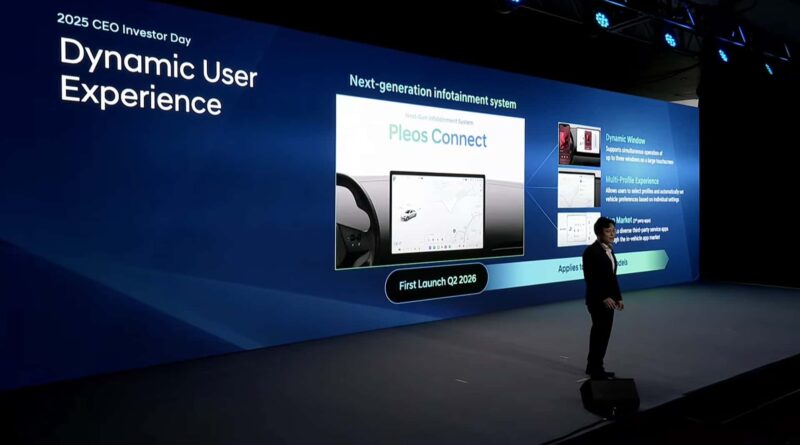Another act of Hyundai: Tesla Software System in 2026
- On the annual Hyundai’s Day Investors in New York, the Korean automaker offered new details about its new generation software system.
- Hyundai’s Pleos Connect OS will come to electrified and gas models since the second quarter of 2026.
- With car applications, more adaptation, artificial intelligence and other features, Hyundai can approach Tesla, Rivian and Chinese slot machines.
As every owner of an electric vehicle KIA or Genesis will probably tell you, the Korean conglomerate got a lot fine. Its EV, which is supposed to be top, in terms of electrical reach, charge times, power and more. But his software experience in the car has grown and skinny jeans.
Smartphone applications are slow and buggy. The information system works well, but it is not a fantasy and the real immediate updates are little and far between them. And none of this can be terribly personalized. Because customers ask more advanced functions in cars and car products, they are exploring new ways to make money from them, something has to change for Hyundai.
This change comes early in the form of Pleos Connect, software set and infotainment system Hyundai Motor Group. On the annual Investor Day in New York, Hyundai, New York, offered several other details that they expect from this operating system when they arrive at new electric, hybrid and gas vehicles in the second quarter of 2026.
And as South Ryu, the head of architecture and the integration of Hyundai vehicles, said, it is all key to staying in competition. “For decades, the automotive industry has been defined by one goal: building and selling quality vehicles,” he said. “Today, this paradigm is cheering. The power of the software has unlocked the potential to keep the vehicles developed long after they have left the factory.”
PLEOS OS vehicle is a software tray and the infotainment system itself is called PLEOS Connect. While Hyundai is developing, it is based on Android Automotive Operation System, used by General Motors, Volvo, Polestar and more. This is a plus: when it comes to voice recognition, speed and integration of Google maps, these systems are excellent. (And it seems unlikely that Hyundai is leaving Apple Carplay.)
Pleos Connect will be the “most visible” application of this system, Ryu said. And because of a few Hyundai previews, it has shown that it looks a lot like Tesla’s infotainment system: there is a bottom bar of commonly used applications, a large map screen, charging and a series of data in the corners, etc. This makes sense because this setting is similar to what is running many advanced Chinese EVs.
Ryu said that new features in this system will include real drivers for any users that are not so extensive on current cars. It allows three Windows to work on SCren on an ounce such as navigation, music and charging information. And it opens the market by third -party applications open to various development. Currently, the current offers of Hyundai are relatively limited in terms of external applications.
However, this system also opens more long -term Hyundai dreams of returning through software services, downloading, upgrading and other digital features.
“Even more importantly, this platform is our gateway to a repetitive (software) returned model that allows us to offer our customers a constantly expanding set of products and experience,” Ryu said. Hyundai officials said they hope to create up to 30% of the company’s income, and things like advanced smartphone connection also require monthly or annual payments.
With a little luck he will soon be worth it. Hyundai has not yet said which cars will receive this software system first in 2026. But when this happens, it will be the necessary digital upgrade for automotive manufacturers, which is exceeded in many other areas.
Contact the author: patrick.george@insideevs.com
(Tagstotranslate) Hyundai
